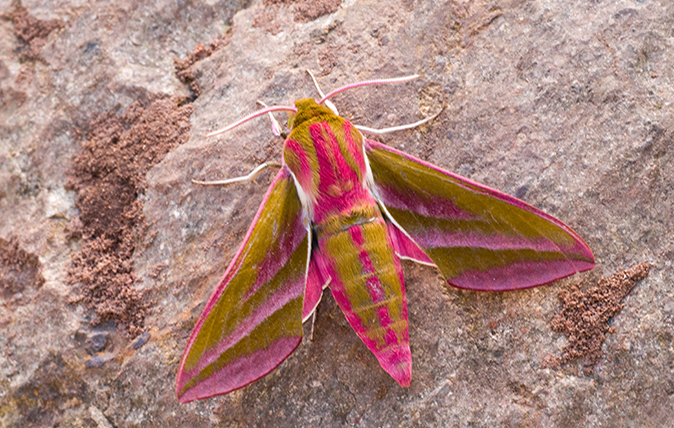The secret life of moths
David Tomlinson asks why we celebrate our butterflies, but neglect our moths?


David Tomlinson asks why we celebrate our butterflies, but neglect our moths?
** Read our simple guide to identifying British moths
Merveille du jour, chamomile shark, marbled coronet, muslin footman: such exquisite and intriguing names beg further investigation, so, if you’ve always thought of moths as rather a dull lot, think again. Some 900 species of macro-moths occur in the British Isles, every one an extraordinary and unique example of adaptation, evolution and survival, yet, sadly, most of us struggle to name, let alone identify, a single one.
‘A moth is a butterfly suffering from poor public relations,’ an enthusiast once remarked and, although he was joking, he’s right—we celebrate our butterflies, but neglect our moths. Physiologically, there’s very little difference between the two, apart from the butterfly’s distinctive clubbed antennae. Both have the same lifecycle of egg, caterpillar, chrysalis and adult.
Indeed, some 96% of the 2,600 species of British Lepidoptera (the order that includes both moths and butterflies) are moths. Lepidopterists split the moths into two: the macros and the micros. It’s not a scientific division, although the tiny size of the micros goes some way to explaining why they’re relatively neglected. The much-hated clothes moth is a micro, but all the moths we’ve chosen to include in this article are macros. Among their number are insects of spectacular beauty, comparable to any butterfly.
Much of our knowledge of moths stems from the work of 19th-century lepidopterists and collectors. Today, facts about status and distribution are produced by a network of enthusiasts, attracting moths not with a flame, but with a mercury- vapour moth trap. An exceptional catch might produce 500 moths of 70 species. But, be warned: moth trapping is seriously addictive, as there’s always the prospect of catching a new species for the garden, the county or even the country.
** Read more features from Country Life
Sign up for the Country Life Newsletter
Exquisite houses, the beauty of Nature, and how to get the most from your life, straight to your inbox.
Country Life is unlike any other magazine: the only glossy weekly on the newsstand and the only magazine that has been guest-edited by HRH The King not once, but twice. It is a celebration of modern rural life and all its diverse joys and pleasures — that was first published in Queen Victoria's Diamond Jubilee year. Our eclectic mixture of witty and informative content — from the most up-to-date property news and commentary and a coveted glimpse inside some of the UK's best houses and gardens, to gardening, the arts and interior design, written by experts in their field — still cannot be found in print or online, anywhere else.
-
 Helicopters, fridges and Gianni Agnelli: How the humble Fiat Panda became a desirable, design classic
Helicopters, fridges and Gianni Agnelli: How the humble Fiat Panda became a desirable, design classicGianni Agnelli's Fiat Panda 4x4 Trekking is currently for sale with RM Sotheby's.
By Simon Mills
-
 What's a 'wellness village' and will it tempt you back into the office?
What's a 'wellness village' and will it tempt you back into the office?The team behind London's first mixed-use ‘wellness village’ says it has the magic formula for tempting workers back into offices.
By Annunciata Elwes